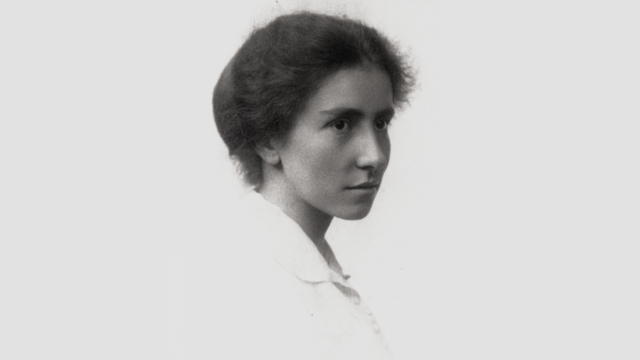Equipped with only dining hall spoons, the clothes on their backs, and pure archaeological curiosity, undergraduates at Cambridge’s Newnham College in 1939 were given a crash course in field work when their professor, Dorothy Garrod, led them through the excavation of skeletal remains that had been unearthed on campus as a result of air-raid shelter preparations.
“[The dig was] definitely not up to today’s PPE [personal protective equipment] standards for sure,” Sam Leggett, a current doctoral student in archaeology at Newnham College, wrote in an email to Gizmodo. As rudimentary as the excavation may have been, he said, “I’ve recently been involved with radiocarbon dating these skeletons, and have undertaken stable isotope analysis on their teeth as part of my PhD, so Professor Garrod’s legacy definitely still lives on!”
Elected as the prestigious Disney Professor of Archaeology in 1939, Garrod was the first prehistorian and woman to chair a department at either Oxford or Cambridge, at a time when women were still not considered full members of the universities. This ceiling-breaking academic role was one of many inspiring achievements of Garrod’s career, as documented in research by Pamela Jane Smith, an oral history specialist and research fellow at the University of Cambridge, and accounts by working archaeologists today.
In her work in the field, Garrod is credited with shifting the Eurocentric view of archaeology toward the Middle East, pioneering a new understanding of prehistory and relationships between Neanderthals and Homo sapiens, and bringing a new scientific focus to a field that was still in the infancy of wide academic acceptance.
Garrod was born on May 5, 1892, to an intellectually elite family in London. She was exposed to scientific rigour, inquiry, and archaeology at a young age, as Smith described in her PhD dissertation, which examined Garrod’s legacy. Though Garrod’s father and grandfathers studied medicine — two of them even treated Queen Victoria directly — Garrod entered Newnham College in 1913 to study ancient and classical history. Archaeology, and in particular the kind of prehistoric archaeology she would later pioneer, were not yet standard offerings at the college.
Following her studies, and under the wing of French anthropologist Henri ‘Abbé’ Breuil, Garrod travelled to Gibraltar in 1925 for what would be her first internationally successful dig. Garrod excavated the Devil’s Tower Cave site over the span of three years and unearthed the remains of a small Neanderthal skull, which Garrod called ‘Abel’ but is now referred to as Gibraltar 2.
This Neanderthal skull was the second ever discovered; the first was found in 1848 in a neighbouring cave just over a thousand feet away.
Garrod’s work helped to push the scope of prehistoric research beyond Europe and toward the Mediterranean. She led some of the first excavations in the Middle East starting in 1928, uncovering tool, agricultural, and skeletal remains during excavations of Mount Carmel. Her efforts would help cement a new understanding of the global prehistoric timeline, including the co-existence of Neanderthal and Homo sapiens.
“She expanded the chronologies for that part of prehistory from what had traditionally been a French story to a global one. Her work in Gibraltar and the Near East were key in understanding human evolution, and cultural changes in the Palaeolithic period,” Leggett told Gizmodo.
In addition to the discoveries made at Mount Carmel, Garrod was also instrumental in pioneering a culture of scientific inquiry within archaeology that exists in the field today.
“[Archaeology] was very interpretive at [Garrod’s] time,” Jennifer Ramsay, associate professor of anthropology at the College at Brockport, SUNY, told Gizmodo by phone. “But with all of her field notes, and all of her documentation of everything she found, it was so meticulous that it was like, this is scientific research.”
Garrod is also known for creating a culture of academic respect at her sites. Kathryn Ranhorn, postdoctoral fellow in the Department of Anthropology at Harvard University, told Gizmodo that Garrod not only preferentially employed and worked collaboratively with local Arab women while at Mount Carmel, but publicly credited the women for ground-breaking discoveries made at the site, including the discovery of a Neanderthal woman, Tabun 1, by a Palestinian woman named Yusra.
“That she was so willing to collaborate was a bit of a departure from the single-authored monographs that were common at the time,” Ranhorn wrote in an email to Gizmodo.
While Garrod certainly stood out in the field based on her merits, not because of her position as a woman, her contributions to archaeology and the respect they garnered helped make academic archaeology more accessible for women.
“Reading her work and seeing what she accomplished showed us female-identifying archaeologists that it was possible to run these kinds of field projects and publish high-quality work even when most of the faces and names around us were male,” said Ranhorn.
Today, Garrod’s legacy lives on not only through her contributions to archaeology and to our understanding of prehistory, but in the opening of a new academic facility — the Dorothy Garrod Building — at Newnham College on April 30, 2019.
